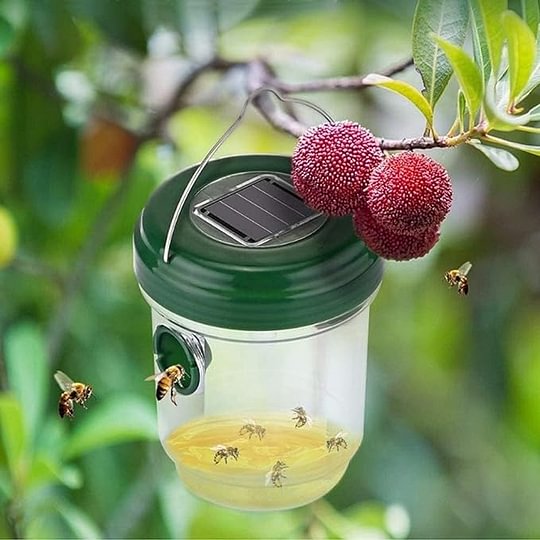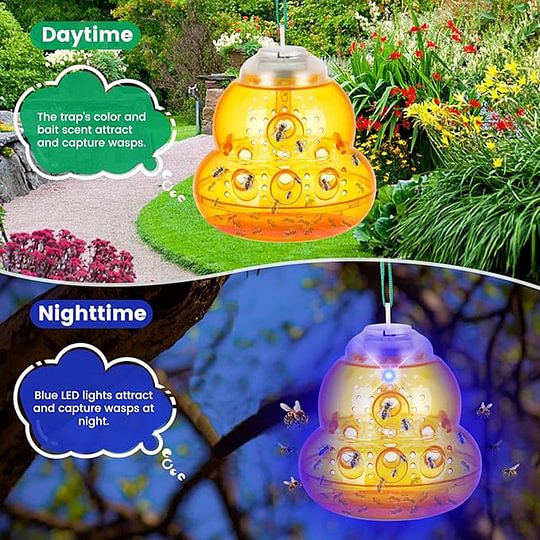Buzz Off! Crafting Your Own DIY Carpenter Bee Trap

If you've ever noticed large holes in your wooden structures or furniture, you might be dealing with a carpenter bee problem. These bees are not only a nuisance but can also cause significant damage to wood over time. Instead of resorting to harmful chemicals or hiring pest control, crafting your own DIY carpenter bee trap can be a practical and environmentally friendly solution.
In this guide, we will explore how to create an effective carpenter bee trap using simple materials you may already have at home. Not only will you save money, but you'll also gain satisfaction from making your own trap. By the end of this article, you'll be equipped with the knowledge to tackle these buzzing pests and protect your wood from further damage. Let's get started on making your very own DIY carpenter bee trap.
Materials Needed
To create an effective DIY carpenter bee trap, you will first need some basic materials. A sturdy wooden board, ideally made of untreated pine or cedar, will serve as the main structure of your trap. You will also need a saw to cut the wood, a drill for making holes, and wood screws to assemble the components securely. Having a measuring tape on hand will help ensure that all your cuts are accurate.
In addition to the wood, you will need a few more supplies to attract and capture the carpenter bees. A plastic or glass jar can be used to collect the trapped bees. It should have a wide opening so that the bees can easily enter the trap. You will also require some sweet bait, such as sugar water or other sweet substances, to lure the bees inside.

Finally, having some outdoor paint or wood sealant will help protect your trap from the elements. This can be especially important if you plan to place it outdoors for an extended period. With these materials gathered, you will be ready to start crafting your own carpenter bee trap.
Step-by-Step Instructions
Start by gathering all the materials you will need for your DIY carpenter bee trap. You will need a wooden box or a reusable plastic container with a lid, some wood glue, and a drill with a hole saw bit. Select a location for the trap where carpenter bees are frequently seen, such as near wooden structures. It is best to set this trap in the spring when carpenter bees are emerging.
Next, prepare the container by drilling holes into the lid. The holes should be about one inch in diameter and spaced evenly apart. carpenter bee traps is ideal as it allows the carpenter bees to enter but prevents larger insects from getting inside. After drilling the holes, use wood glue to secure the lid back onto the box or container. You may also choose to paint the trap yellow or black, as these colors are known to attract bees.
Finally, place the trap in the chosen location, ideally in a sunny spot. You can fill the bottom of the trap with a small amount of water and a few drops of dish soap to ensure that any bees that enter cannot escape. Check the trap regularly to remove any captured bees and replace the trap as necessary to ensure its effectiveness throughout the season.
Tips for Effective Trapping
To enhance the effectiveness of your DIY carpenter bee trap, consider the placement of the traps. It's vital to position them close to areas where you've noticed carpenter bee activity or damage. Look for nesting sites, often found in wooden structures like eaves, fences, and decking. Hanging the traps in sunny locations can increase their visibility and lure more bees, as they are attracted to light.


The bait you use can significantly impact your trap's success. A mixture of sugar water or sweet fruits can attract these bees effectively. Another option is to use commercial baits designed specifically to attract carpenter bees. Whichever bait you choose, ensure it is refreshed regularly to maintain its enticing aroma, as stale bait may deter bees from approaching the trap.
Lastly, maintenance is essential for achieving long-term results with your traps. Regularly check your traps to remove any captured bees and replace bait as needed. It's also important to inspect the traps for any signs of wear or damage, as broken traps can lead to less effective trapping. By keeping your traps in optimal condition and adjusting their placement or bait as necessary, you can increase the likelihood of successfully controlling your carpenter bee population.
